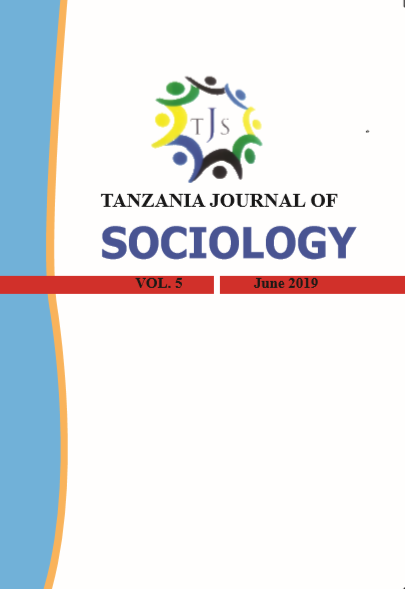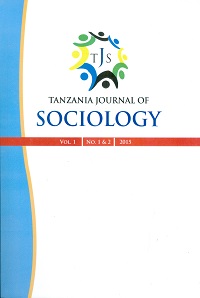"Birds of a Feather": Homophilous Networks of Graduate Fellows across Academic Disciplines and Cultural Backgrounds
Abstract
Sharing homophily in cultural background (nationalities) and academic disciplines may be said to grant a base for actors to closely interact, share information, advise, support, trust, and collaborate among themselves. However, this might not necessarily restrict forming ties along these lines with other actors from other nationalities and academic disciplines, as far as they work in the same academic environment. Using social network analysis, this paper examines homophilous networks (associating and bonding with similar others) and formation of ties across nationalities and academic disciplines among graduate fellows in Global Human Development PhD programme. The fndings demonstrate existence of strong ties across nationalities and academic disciplines among actors in homophilous networks. This suggests persistence of other attributes necessary for the formation of ties and networks in addition to homophily in nationalities and academic disciplines. The paper urges for a need to undertake a broader study of this nature to encompass more attributes of the patterns of the relations between actors of the studied group or any other similar group.
Keywords: Homophily, social networks, ties, information, advice, support, trust
References
Barabà si, A., Jeong, H., Ravasz, R., Neda, Z., Vicsek, T., and Schubert, T. (2002). ' Evolution of the Social Network of Scientifc Collaborations ' , Physica A, Vol. 311, pp. 590-614.
Barrera, D. and van de Bunt, G. (2009). ' Learning to Trust: Networks Effects through Time ' , European Sociological Review, Vol. 25 No. 6, pp. 709 €“72.
Blau, P. (1994). The Structural Contexts of Opportunities, Chicago, Chicago University Press.
Borgatti, S., Everett, M. and Freeman, L. (2002). UCINET 6.0 Version 1.00. Natick, Analytic
Technologies.
Bourdieu, P. and Wacquant, L. (1992). An Invitation to Refexive Sociology, Chicago, IL, University of Chicago Press.
Burt, R. S. (1982). Toward a Structural Theory of Action: Network Models of Social Structure, Perception and Action, New York, Academic Press.
Burt, R. S. (2005). Brokerage and Closure. An Introduction to Social Capital. New York, Oxford University Press.
Coleman, J (1990). Foundations of Social Theory. Cambridge, M.A, Harvard University Press.
Feld, S. and William C. (1998). ' Foci of Activities as Changing Contexts for Friendship ' . pp. 136-52 in Placing Friendship in Context, eds. Rebecca G. Adams and Graham Allan. Cambridge,
UK, Cambridge University Press.
Granovetter, M. (1973). ' The Strength of Weak Ties ' , American Journal of Sociology, Vol. 78, pp.1360-80.
Hanneman, R. (2002). Introduction to Social Networks, Online book free on the web at http://www.analytictech.com/networks.pdf (Accessed: 29.04.2010).
Ibarra, H. (1992). ' Homophily and Differential Returns: Sex Differences in Network Structure and Access in an Advertising Firm ' , Administrative Science Quarterly, Vol. 37, No. 3, pp. 422-447.
Kehrwald, B. (2007). ' The Ties that Bind: Social Presence, Relations and Productive Collaboration in Online Learning Environments ' , Proceedings Ascilite, Singapore.
Krebs, V. (2008): An Introduction to Social Network Analysis, http://www.orgnet.con/sna.html (Accessed: 28.04.2010).
Leahey, E., and Reikowsky, R. (2008). ' Research Specialization and Collaboration Patterns in Sociology. Social Studies of Science, Vol. 38, pp. 425-440.
Leenders, R. (1996). ' Evolution of Friendship and Best Friendship Choices. Journal of Mathematical Sociology, Vol. 21, No. 1-2, pp. 133-148.
Marsden, P. (1987). ' Core Discussion Networks in America ' . American Sociological Review, Vol. 52, No. 1, pp. 122-113.
McPherson, M, Smith-Lovin, L and Cook, J (2001). ' Birds of a Feather: Homophily in Social Networks ' . Annual Review of Sociology, Vol. 27, No. 1, pp. 415-444.
Mergel, I., Huerta, T., and van Stelle, J (2007). ' How do Networkers Network? ' PNG Working Paper No. PNG07-005.
Mollica, K, Gray, B and Trevino, L. (2003). ' Racial Homophily and its Persistence in Newcomers ' Social Networks. Organization Science, Vol. 14, No. 2, pp. 123-136.



